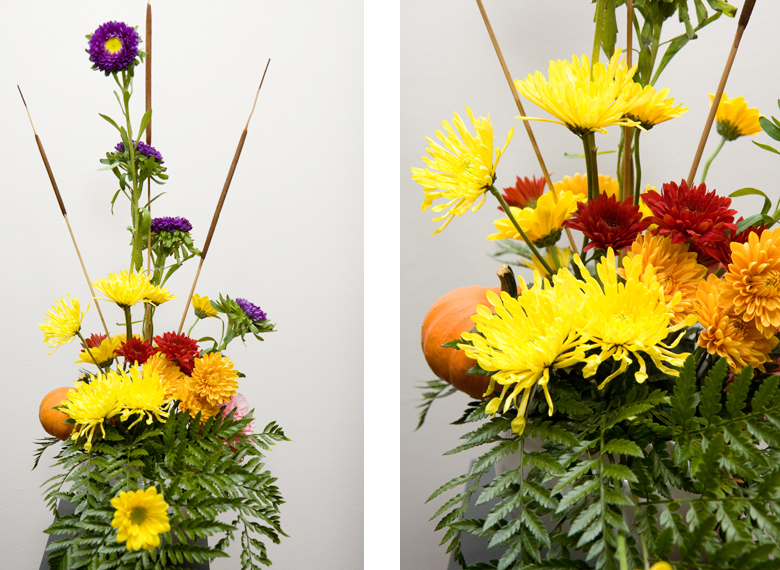Another great class last week! The topic of discussion was design principles. There are 7 essential design principles.
1) Composition: The organization or grouping of different elements used to create a unified whole.
2) Unity: The relationship of the individual parts to each other which produces a single, cohesive unit.
3) Proportion: The comparative size relationship between ingredients within a design. This relationship can be measured in the quantity of flowers, length of the stems, or amount of materials used in a design. The container being used sets the proportions for most designs. The standard rule is 1 ½ to 2 times the height of the container. The setting in which the arrangement will appear determines the scale of the design.
4) Dominance: The visual organization within a design that emphasizes one or more aspects. When one element is emphasized, the others become secondary. The focal point, which we mentioned in a previous post, is an example of one area that’s dominant.
5) Balance: A design is balanced when the placement of the components conveys both physical and visual stability.
- Physical Stability – The actual placement of the main stems to establish the structure of the design. Poor stem placement in an arrangement may cause leaning and tipping due to the inadequate physical balance.
- Visual Stability – Using color and material placement in sequence will create visual stability in an arrangement. Darker colors appear to be heavier and are used at the base of a design; lighter colors appear more lightweight and are used at the top of a design.
- Asymmetrical Balance – When an unequal visual weight appears on either side of an imaginary center line, we have asymmetrical balance.
- Open Balance – is a phrase used when neither symmetrical nor asymmetrical characteristics can be applied to a design. Some examples include: parallel systems, and new wave. They’re considered open balance because it’s difficult to apply traditional balance fundamentals.
6) Harmony: Harmony is the pleasing aesthetic quality created by the careful selection of parts for a composition. It can be expressed in two ways: either through similar materials or contrasting components which are distinctively different. It’s usually achieved through the use of color, but also through texture, shape, or size of the materials.
7) Rhythm: The filling of a motif or formal element at regular or irregular intervals. It can be expressed in line, form, color, spacing between flowers, or the simple repeating of curves in planes within a composition. An example could be 12 pink tulips wrapped in cellophane.
Our latest assignment was creating an asymmetrical arrangement. Here is a peek at my interpretation:

An “L-shape” is formed with the fern and yellow daisy in the front. Hmm, I guess it would have been better to have taken a photo with a sideview so that you could see the true “L-shape” of the centerpiece, huh? Lesson learned. (chuckle)

Until next time, here’s a kiss and a smile! 🙂
